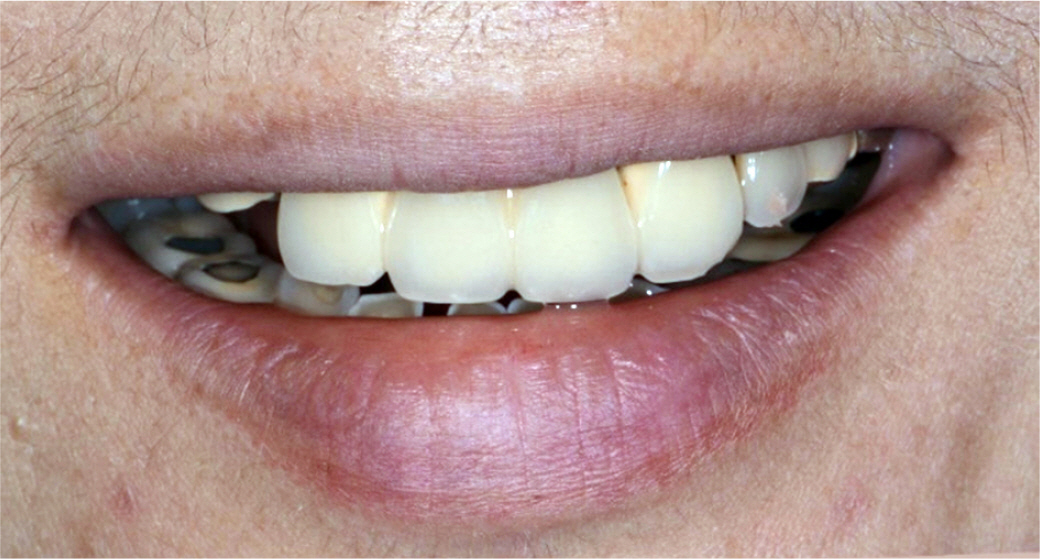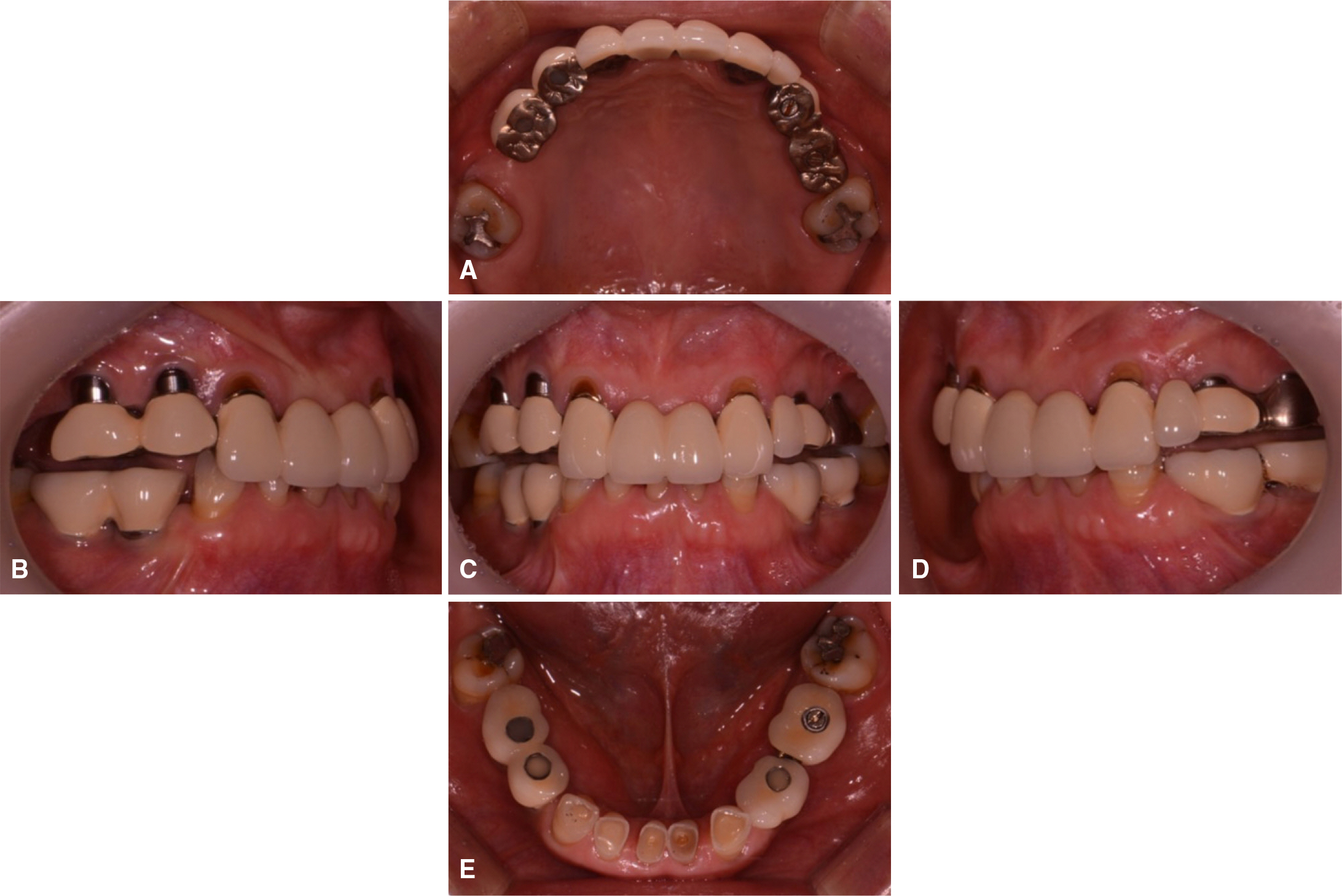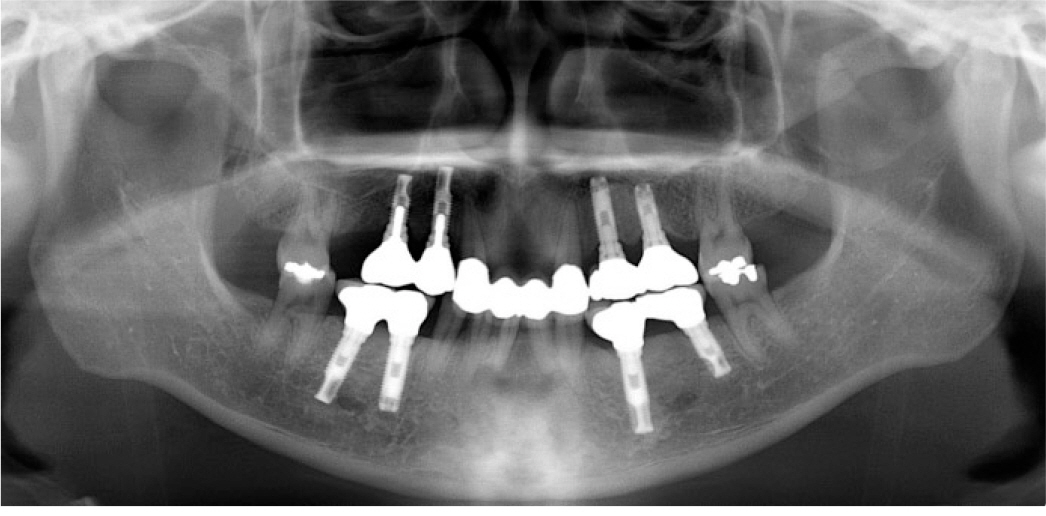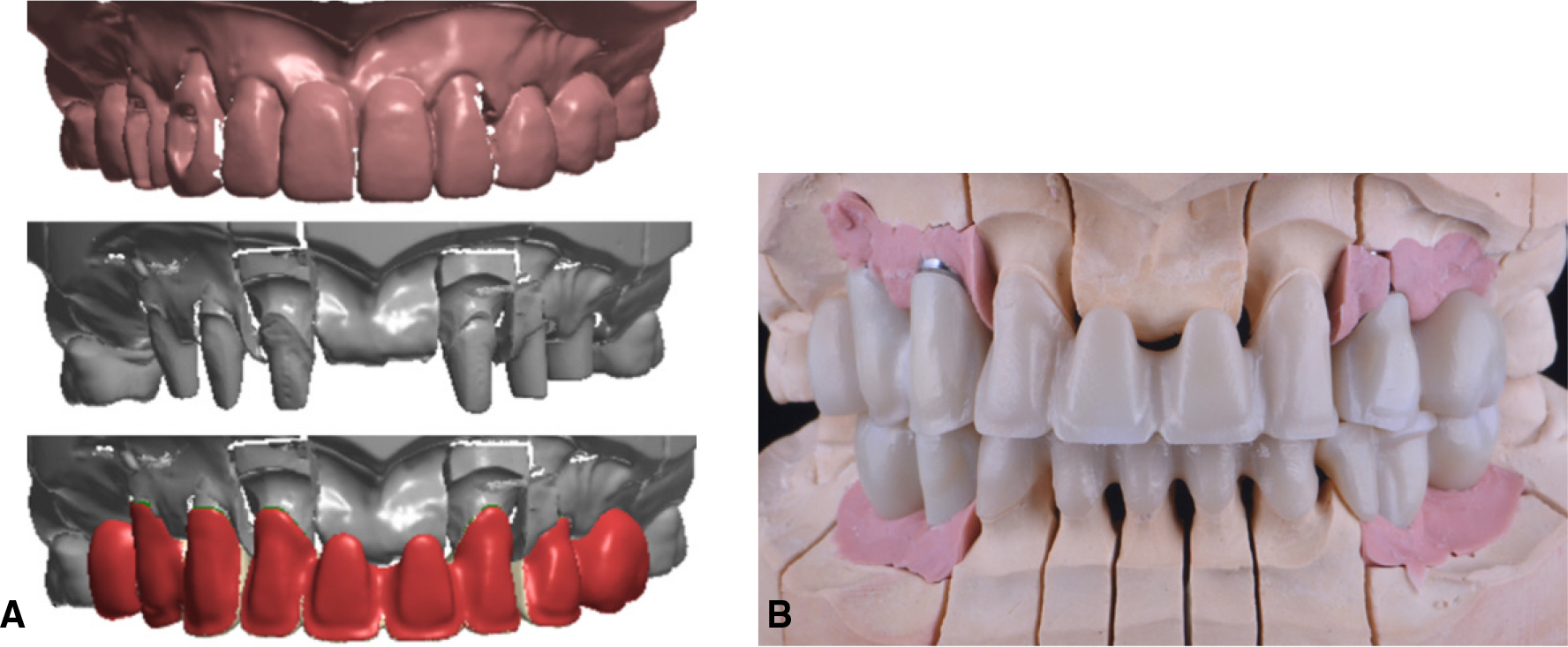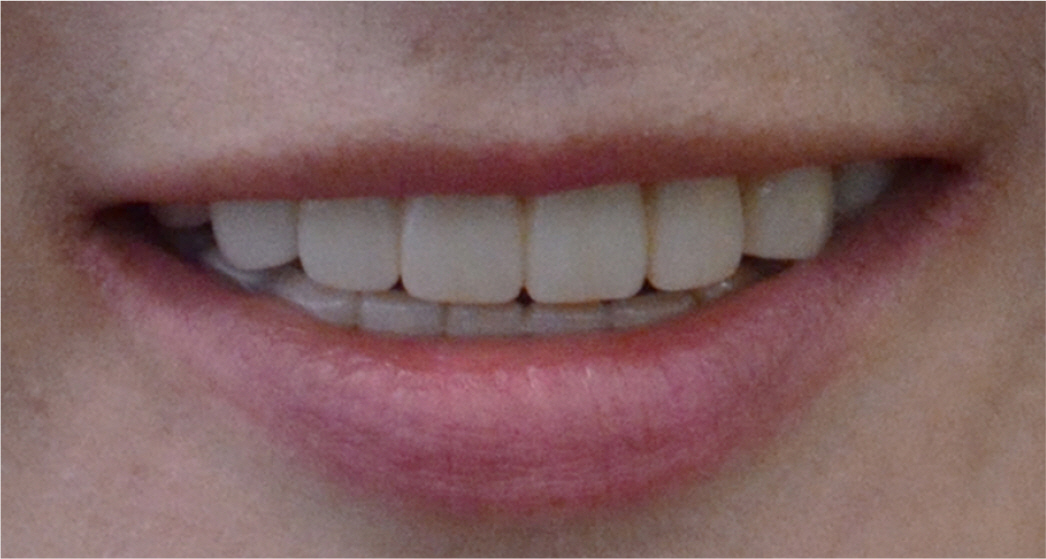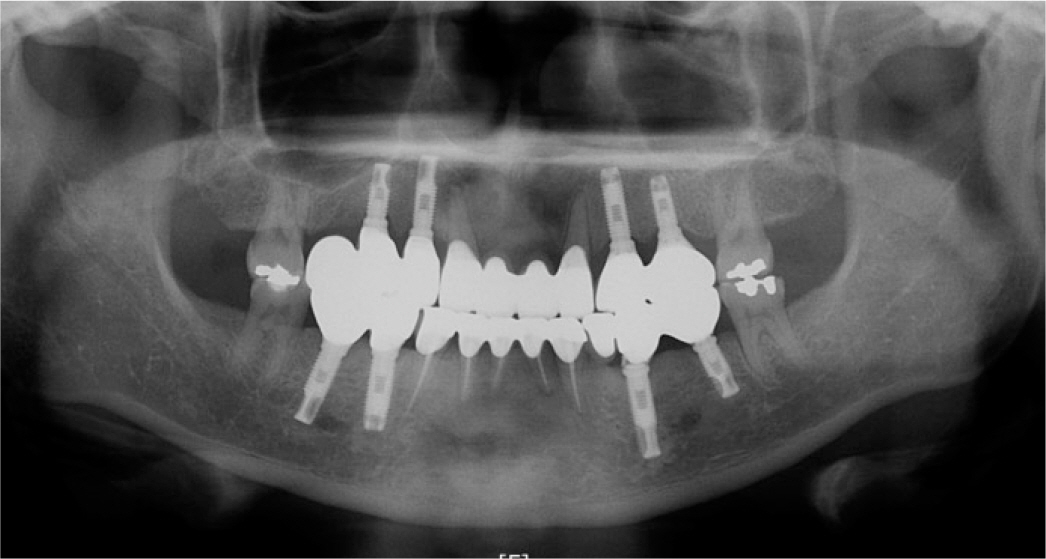J Korean Acad Prosthodont.
2016 Jan;54(1):28-34. 10.4047/jkap.2016.54.1.28.
Reconstruction of implant prostheses under infraocclusion: a case report
- Affiliations
-
- 1Department of Prosthodontics, School of Dentistry, Kyung Hee University, Seoul, Republic of Korea. yhwoo@khu.ac.kr
- KMID: 2153046
- DOI: http://doi.org/10.4047/jkap.2016.54.1.28
Abstract
- Implant has been an effective treatment option for the patients with oligodontia. However, it still remains unclear when the implant should be placed. Skeletal growth that can appear even after the growth period can lead to infraocclusion of the implant which can cause functional or esthetic complications. In order to minimize these problems, definitive restorations should be placed after the functional and esthetic rehabilitation is achieved through the use of provisional restorations. Definitive restorations made with monolithic zirconia were created by replicating provisional restorations by using the latest CAD/CAM technology. These definitive restorations were delivered to the patient and clinical observation after the treatment showed satisfactory result.
Keyword
Figure
Reference
-
1.Thilander B., Odman J., Gröndahl K., Friberg B. Osseointegrated implants in adolescents. An alternative in replacing missing teeth? Eur J Orthod. 1994. 16:84–95.2.Oesterle LJ., Cronin RJ Jr., Ranly DM. Maxillary implants and the growing patient. Int J Oral Maxillofac Implants. 1993. 8:377–87.3.Cronin RJ Jr., Oesterle LJ., Ranly DM. Mandibular implants and the growing patient. Int J Oral Maxillofac Implants. 1994. 9:55–62.4.Fradeani M. Esthetic rehabilitation in fixed prosthodontics vol. I esthetic analysis: a systemic approach to prosthetic treatment. Quintessence publishing co., Ltd.;2004. p. 72–81.5.Turner KA., Missirlian DM. Restoration of the extremely worn dentition. J Prosthet Dent. 1984. 52:467–74.
Article6.Kahler W. The cracked tooth conundrum: terminology, classification, diagnosis, and management. Am J Dent. 2008. 21:275–82.7.Kwon KR., Woo YH., Choi DG. The study of relationship between sagittal condylar guide angle and incisal guide angle during mandibular protrusion in normal Korean. J Korean Acad Prosthodont. 1989. 27:11–36.8.Rilo B., da Silva JL., Mora MJ., Santana U. Guidelines for occlusion strategy in implant-borne prostheses. A review. Int Dent J. 2008. 58:139–45.
Article9.Ash MM. Wheeler' s dental anatomy. 7th ed.Philadelphia: Saunders;1993. p. 150–93.10.Hildebrand CN. Crown lengthening for optimum restorative success. Compend Contin Educ Dent. 2003. 24:620–2. 624–9.11.Dawson PE. Determining the determinants of occlusion. Int J Periodontics Restorative Dent. 1983. 3:8–21.12.Misch CE. Dental Implant Prosthetics,. 1st ed.New York: Elsevier;2003. p. 414–51.13.Behrents RG. A treatise on the continuum of growth in the aging craniofacial skeleton. Michigan: UMI Dissertations Publishing;1984. p. 1–763.
- Full Text Links
- Actions
-
Cited
- CITED
-
- Close
- Share
- Similar articles
-
- Implant Surgery for Fixed Implant-supported Prostheses in the Edentulous Mandible: A Case Report
- Ten-year follow-up of full mouth rehabilitation with fixed prostheses using implants and natural tooth
- Oral rehabilitation using implant supported fixed dental prostheses in a growing patient who underwent mandibulectomy and fibular free flap
- Full mouth rehabilitation of an edentulous patient using maxillary complete denture and mandibular implant supported fixed prostheses: a case report
- Interproximal contact loss between implant-supported prostheses: a clinical report

